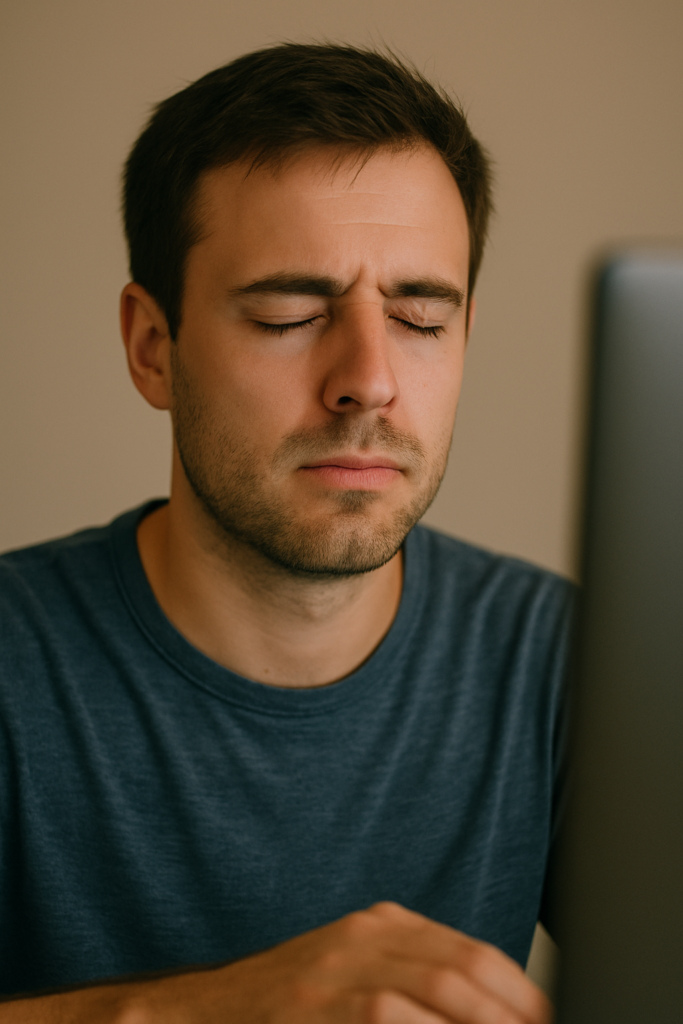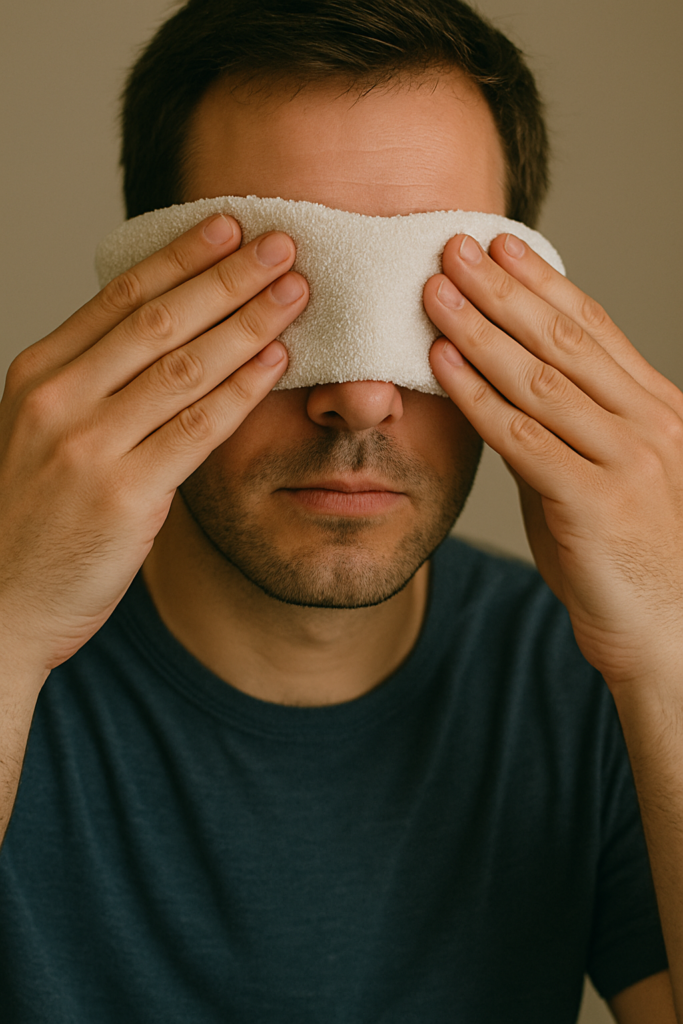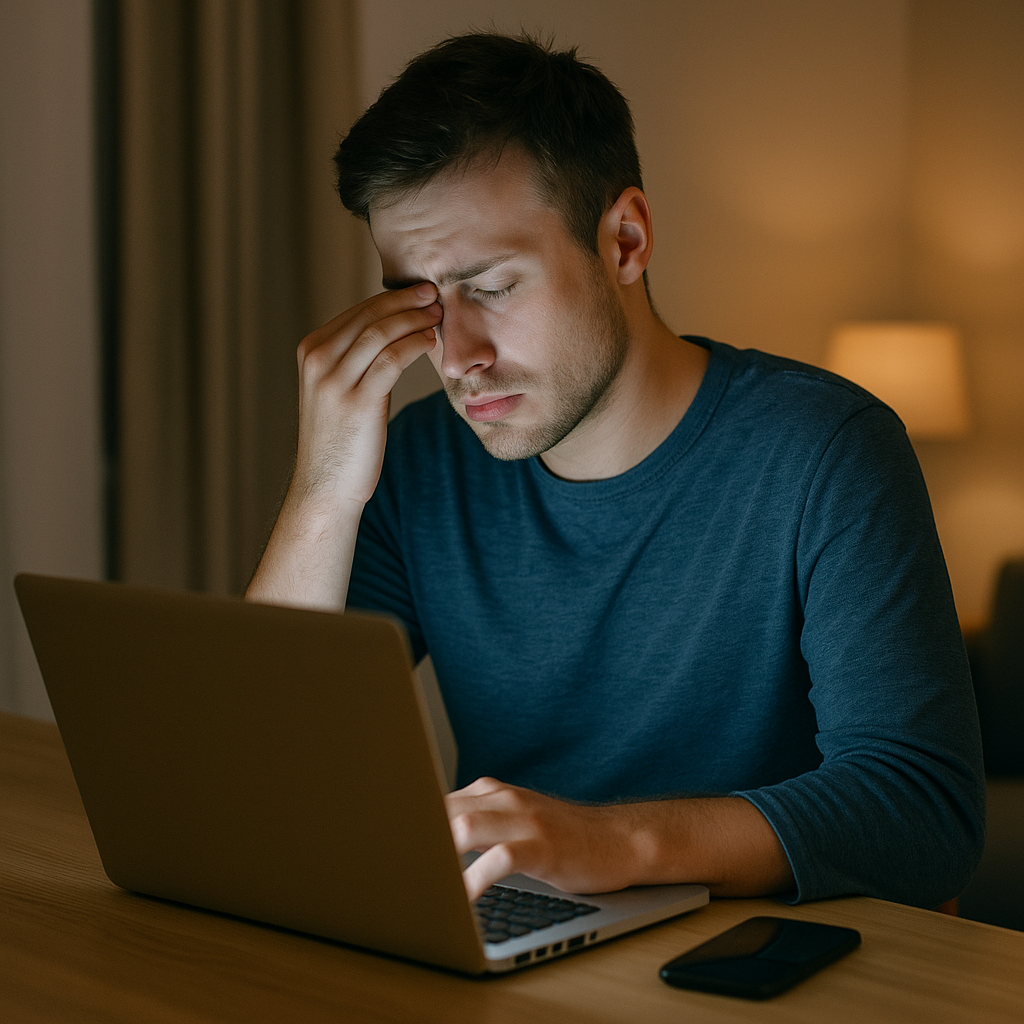Introduction — Why Dry Eyes from Screens Are So Common
We live with screens. They’re in our pockets, on our desks, and beside our beds. For many people that convenience comes at a cost: chronic dry eye symptoms. The sensation — gritty eyes, burning, intermittent blurring, and the need for artificial tears — can be maddening. Worse, the discomfort often becomes the background noise of daily life, chipping away at productivity and quality of sleep.
This article explains why screens cause dry eyes, separates what’s myth from what’s real, and, more importantly, gives a clear, practical roadmap to feel better quickly and reduce risk long-term. The remedies range from simple behavior changes to medical treatments — and most readers can find relief with a few consistent adjustments.
1) What “dry eye” actually means — the biology in plain language
Dry eye disease is not one single problem. It’s a syndrome caused by inadequate tear quantity and/or poorer tear quality. Tears are not just water — they’re a finely balanced mix of water, oils (lipids), and mucus. Each layer has a job:
- Lipid layer (outer): Prevents evaporation. Made by meibomian glands along the eyelid margin.
- Aqueous layer (middle): Hydrates the eye surface. Produced by lacrimal glands.
- Mucin layer (inner): Helps tears cling to the cornea.
If any layer is disrupted, the eye surface can dry out. With screens, the two biggest contributors are decreased blinking (so tears evaporate) and poor ocular surface lubrication (often due to gland dysfunction). Over time, small daily insults accumulate and symptoms become chronic.
2) Why screens make dry eyes worse — practical mechanisms
When you read a book, you blink naturally and frequently. When you stare at a phone or monitor, the blink rate drops dramatically — often from ~15–20 blinks per minute to under 7. That means less distribution of the lipid and aqueous layers and faster evaporation.
Here are the key screen-related mechanisms:
- Reduced blink rate and incomplete blinks. Incomplete blinks don’t express the oily secretions from the meibomian glands, so the tear film evaporates faster.
- Closer working distances. Phones and tablets are often held closer than reading material, increasing convergence demand and reducing blinking further.
- Screen glare and contrast. High contrast and glare make you hold a fixed gaze longer.
- Posture and reduced humidity. Office AC, poor posture, and eyes slightly open during concentration increase exposure.
- Poor sleep and blue light. Late-night screen use can disrupt sleep, decreasing ocular repair time and worsening symptoms.
Put together, these daily habits create a repeating cycle: less blinking → faster evaporation → irritation → reflex tearing (which is watery and short-lived) → more discomfort.
A note on terminology: transient vs. chronic dry eye
Some people get transient dryness — it flares up after a long session and resolves with rest. Others develop chronic dry eye disease, where underlying gland dysfunction, inflammation, or a systemic condition plays a role. Screens aggravate both, but management differs transient cases often respond to behavior changes; chronic cases may require medical therapy.
3) Recognizing symptoms — what to watch for (and what isn’t dry eye)
Common screen-related symptoms:
- Burning, gritty, or foreign-body sensation
- Intermittent blurred vision (worse with prolonged near work)
- Tearing or watery eyes (a paradoxical reflex)
- Redness and soreness
- Eye fatigue/headache after reading or screen work
What is less likely to be dry eye:
- Sudden, severe eye pain or sudden vision loss — seek immediate care (these may signal other emergencies).
- Chronic redness with discharge and pain hints at infection or inflammatory disease and needs exam.
If symptoms are persistent (weeks), get an eye exam — especially if you use contact lenses, take medications that dry the eye, or have autoimmune disease.
4) First-line remedies you can start today (fast relief + daily habit changes)
This section focuses on high-impact, low-effort actions that can reduce symptoms within days to weeks.
A. Blink intentionally and use “full blinks”
Set a simple timer or reminder (or use an app) to pause every 20 minutes and do 10 full blinks intentionally. Teach yourself to close the eyelids completely with a slow, deliberate blink. This expresses meibomian oil and spreads tears evenly.
B. Follow the 20-20-20 rule
Every 20 minutes, look at something 20 feet away for 20 seconds. This relaxes the accommodative system and naturally increases blink rate.
C. Optimize your screen setup
- Keep screens at or slightly below eye level; looking downward reduces exposed ocular surface and encourages blinking.
- Keep the device at about an arm’s length for computers, slightly further for large tablets.
- Reduce glare: angle screens, use an anti-glare filter, and balance room lighting.
D. Increase ambient humidity
A small desk humidifier can markedly reduce evaporation in dry, air-conditioned offices.
E. Use preservative-free artificial tears
For immediate relief, preservative-free lubricating drops (used multiple times daily) are a safe first choice. Avoid drops with vasoconstrictors (“get the red out”) as they can worsen dryness with repeated use.
F. Warm compresses + lid hygiene
Warm compresses (30–60 seconds, several times daily) help unblock meibomian gland secretions. After warming, gently massage the lids toward the lashes to express oils. Use a gentle lid scrub (micellar solution or baby shampoo diluted) once daily in persistent cases.

5) When simple measures aren’t enough — next-level treatments
If symptoms persist despite good habits, the following options are commonly used by eye care professionals:
A. Prescription topical therapies
- Anti-inflammatory drops (e.g., low-dose steroid short course or topical cyclosporine / lifitegrast) help reduce chronic ocular surface inflammation that perpetuates symptoms. These require an eye doctor prescription and monitoring.
B. Meibomian gland therapies
- In-office gland expression and thermal pulsation treatments (LipiFlow, iLux) heat and express oil from meibomian glands. Many patients who don’t respond to warm compresses see measurable improvement after one professional session.
C. Intense Pulsed Light (IPL)
Used primarily for meibomian gland dysfunction, IPL reduces inflammation and can improve gland function in selected patients.
D. Oral supplements and systemic therapy
- Omega-3 fatty acids (from food or high-quality supplements) can help tear quality in some people. Evidence is mixed, but reasonable as part of a broader plan.
- If systemic disease is present (autoimmune, hormonal), treat the underlying condition.
E. Punctal plugs
For aqueous-deficient dry eye, plugs temporarily block tear drainage to increase tear film retention — helpful for people who have watery but insufficient tear protection.
6) Managing contacts, makeup, and medications
Contacts often worsen dry eye symptoms. Consider switching to daily disposables, reduce wear time, or use specialty lenses designed for dryness. Discuss lens options with your optometrist.
Eyelid makeup that migrates onto the lid margin can obstruct glands; practice good lid hygiene and remove makeup before bed.
Also review your medications with your doctor — antihistamines, some antidepressants, blood pressure meds, and diuretics can worsen dryness.

7) Long-term prevention: building resilient eyes
The difference between episodic relief and lasting control is consistency. Long-term strategies include:
- Daily lid hygiene if you have gland dysfunction.
- Regular full-blink exercises during prolonged near tasks.
- Environmental control: humidifiers, avoiding direct AC on your face.
- Dietary habits: a diet rich in green leafy vegetables, oily fish, and hydration supports tear health.
- Scheduled screen breaks: set calendar reminders if needed; build micro-breaks into workflows.
If you have recurring symptoms despite best measures, get a comprehensive ocular surface evaluation — modern dry eye testing (tear osmolarity, meibography, tear breakup time) helps personalize treatment.
8) Special populations: children, contact lens wearers, and older adults
- Children: Screens may trigger dryness in some kids — enforce breaks, outdoor time, and proper device distance.
- Contact lens wearers: Consider switching to rewetting drops recommended by your eye care provider and aim for shorter wear periods.
- Older adults: Age reduces tear production; check for medications and systemic contributors.
9) Practical 7-day plan to reduce dry eye symptoms (easy to follow)
Day 1–2: Start with behavior changes: 20-20-20 rule, intentional blinks, and adjust screen height/brightness. Use preservative-free drops thrice daily.
Day 3–4: Add warm compresses twice daily and practice lid hygiene once at night.
Day 5: Evaluate progress; if minimal improvement, book a teleconsult or clinic visit.
Day 6–7: If you have MGD signs (crusting, frothy tears), continue compresses and consider scheduling in-office gland expression.
Consistency across the week often shows clear improvements; many people notice reduced irritation in 3–7 days.
10) Evidence snapshot — what research says (short, practical summary)
Clinical research supports blink rate reduction as a major contributor to evaporative dry eye during screen use. Warm compresses + lid hygiene are evidence-based for meibomian dysfunction. Anti-inflammatory drops and in-office thermal therapies show benefit for moderate to severe cases. Omega-3 evidence is mixed but safe as an adjunct.
Frequently Asked Questions (FAQ)
Q1: Can dry eyes from screens permanently damage my vision?
A: Rarely. Screen-related dry eye usually causes discomfort and fluctuating vision. Permanent damage is uncommon but untreated chronic inflammation can lead to surface damage — which is why early management matters.
Q2: How often should I use artificial tears?
A: Use preservative-free tears as needed. For persistent symptoms, 4–6 times daily is common; your doctor may recommend a personalized schedule.
Q3: Are contact lenses compatible with heavy screen use?
A: They can be, but contacts may exacerbate dryness. Consider daily disposables or specialty lenses, and use rewetting drops approved for lenses.
Q4: Do blue light filters help dry eyes?
A: Blue light filters primarily help sleep and glare; they don’t directly fix tear film evaporation. They can be part of a broader strategy for comfort.
Q5: When should I see an eye doctor?
A: If symptoms persist beyond 2 weeks despite home measures, vision fluctuates frequently, or you have pain/redness/discharge, seek professional care.
Conclusion — small changes, big difference
Dry eyes from screen use are common but highly manageable. The fastest wins are intentional blinking, scheduled breaks, warm compresses for gland health, and preservative-free lubricants for symptom relief. If simple measures don’t help, modern in-office treatments and prescription therapies offer powerful improvement.
Make a small daily commitment — blink fully, take a 20-second break, and adjust your screen — and your eyes will thank you.



